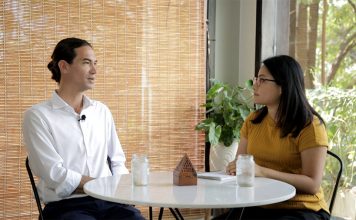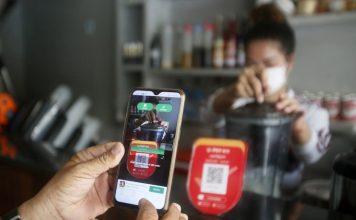
In July of this year, Kerry Worldbridge Logistics held the groundbreaking ceremony for the Kerry Wordbridge Special Economic Zone (KWB SEZ), an economic zone located south of Phnom Penh that stands out due to the inclusion of a Customs Bonded Warehouse Zone, also known as a bonded warehouse.
The B2B team sits down with Oknha Sear Rithy, chairman of Kerry Worldbridge Logistics Ltd., to discuss the advantages of having a bonded warehouse in KWB SEZ, and the latest developments in customs procedures.
Kerry Worldbridge Logistics is a joint venture formed and indirectly held by the Hong Kong-listed Kerry Logistics Network Limited and Worldbridge International (Cambodia) Ltd., an established logistics company since 1992.
B2B: What are the benefits of having a bonded warehouses in a Cambodian SEZ?
Oknha Sear Rithy: Bonded warehouses are very important for Cambodia. They allow companies to store dutiable goods without payment of duty. For example, if Ford brings in a truck or a car and leaves it at our bonded warehouse, they will be exempt from paying duty on this product. The buyer will be the one paying taxes.
If someone in Vietnam places an order for this very same product, Ford can use our bonded warehouse to bring the product to its destination without paying import tax. If you don’t come into a bounded warehouse you must pay taxes on your truck. How can you then sell the vehicle at a reasonable price when you are paying so much in tax? You simply can’t. That’s why during the setup of our SEZ we prioritise the establishment of a bonded warehouse, allocating over 20 hectares of land to this facility.
There is yet another reason why I thought setting up a bonded warehouse was necessary. Nowadays, business transactions between Vietnam and Thailand never pass through Cambodia, but rather go through Singapore. That’s a billion dollar market that we just aren’t tapping into, that we are missing out on. People choose to go through Singapore. Cambodia is in the middle of two giant countries, but we gain nothing. We set up this SEZ with a bonded warehouse so Cambodia becomes a logistics hub for all good transits to Vietnam and Thailand.
B2B: How does the Kerry Worldbridge SEZ compare to other SEZs in Cambodia in terms of infrastructure and services provided?
Oknha Sear Rithy: We are not just focused on manufacture. We are different from other SEZs because we give our clients a complete solution, which of course includes a logistics solution. This is one of the biggest issues for companies that decide to set up a factory in a developing country: they always worry about logistics.
B2B: What are some of the common logistics challenges in Cambodia?
Oknha Sear Rithy: One is infrastructure. This is a bit challenging. Logistics play a big part for every business. It’s about 15 to 20 percent of your cost. People will succeed or fail depending on how they set up their logistics.
Most of the ships coming into Cambodia are small, because our seaport cannot accommodate big mother vessels. This increases the cost for companies operating in Cambodia. And we don’t have trains. Cambodia’s rail infrastructure is really poor. We have only the Phnom Penh-Sihanoukville line.
Another notorious deficit is Cambodia’s skills gap.
B2B: Do you know any new developments in customs procedures in Cambodia?
Oknha Sear Rithy: Corruption is still a problem. However, I acknowledge and appreciate governmental efforts to reform the system. The government is going to great lengths to speed up bureaucratic procedures and minimise costs for companies. Unfortunately, the whole process of going through customs is still more expensive here than in neighbouring countries.
The Automated System for Customs Data, ASYCUDA, is a good example of the government stepping in and trying to upgrade the system. ASYCUDA allows companies to carry many of the procedures online, granting them protection from face to face meetings. If I don’t meet directly with the customs official, then I am not going to be pressured into giving out a bribe. The system is up and running in some areas, and we are hoping it will be soon available nationwide. It’s good for us. We are happy the government is willing to implement reforms.
B2B: How do you predict the transportation network is going to evolve with ASEAN Economic Community (AEC) membership at the end of the year?
Oknha Sear Rithy: Let me give a word of advice to the local transportation companies: to ready themselves for AEC, they must look inwards. In the new paradigm that AEC will usher in, you need to be competitive to stand a chance against your neighbours. When it comes to logistics, you have to think in terms of volume. If you have less volume, you can’t fight. You must have volume.
You have to be willing to undergo an internal overhaul. I would suggest that if smaller companies have a chance to partner up with bigger ones, they do so. It’s better to share a big cake among many, than to eat a small cake all by yourself.
And they have to start thinking in terms of quality. A lot of transportation companies here have very old trucks. No quality checks. Our neighboring countries, on the other hand, have detailed and strict SOPs that they abide by.








